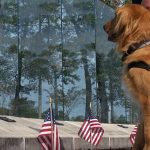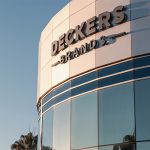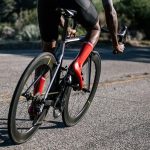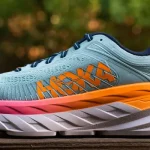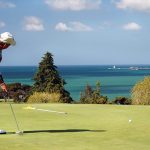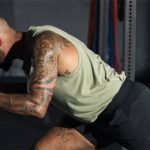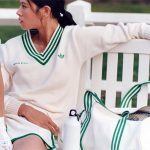The recent Cowen & Company investor conference in New Yorks Times Square and ICR XChange conference in Dana Point Calif., features most of the major, publicly traded companies that do business in the Bicycle, Outdoor, and Snow Sports industries, including both vendors through retailers. While much of the information covered was pro-forma re-caps of current and past financial performance, many of the companies provided additional details about their strategy for the coming year.
Quiksilver, Inc. management still has their hands full building the winter sports side of their business and still feels that they are at the beginning stages of integrating Rossignol into their corporate structure and culture. Steve Brink, the companys CFO said that Rossignol is still making skis for skiers, but they will move the brand beyond that and transform it into an alpine mountain lifestyle company. Quik clearly sees some major opportunities by addressing this audience, claiming that the outdoor lifestyle market is “about ten times” the size of the surf lifestyle market.
On the manufacturing side of Rossignols business, Quiksilver has made some strides by moving a portion of the ski and snowboard to Spain, where there are lower wages.
However, the big move will come next summer, when Quik plans to close down one factory and significantly downsize another. This will give Rossignol $20 million to $25 million in production savings on top of $20 million in SG&A savings. At the end of the year Quik is expecting the brand to have approximately a 6% operating margin and the target is to have that at 13% to 14% in 2010.
Looking ahead, Quiksilver expects to see strong organic growth across all of its brands, bringing revenues up to between $2.86 billion and $3.3 billion in the next two to four years. Specifically, they are expecting Quiksilver revenues to hit $900 million to $1.0 billion; Roxy revenues at $800 million to $900 million; DC at $350 million to $450 million; Rossignol at $550 million to $650 million; and Cleveland, $190 million to $220 million in that same time frame. On a separate note, the company is expecting Rossignols newly re-designed apparel line to grow from $50 million to $100 million in total by 2008 and then to $150 million in 2010. Operating margins at Rossi are expected to grow from current 6% neighborhood to a range of 13% to 14%.
VF Corporation is well on its way towards its goal of transforming the company into a lifestyle business. Today lifestyle products account for roughly 35% of the companys portfolio compared to only 10% a few years ago. Eric Wiseman, VFCs president and COO, said that he expects this business to increase to about 60% of VFs business by 2009.
Overall, VFC is anticipating 6% to 8% top-line growth each year, with half of that coming from organic sales increases and half from acquisitions. Most of the organic growth and all of the acquisitions are expected to be in the lifestyle category, which is expected to grow in the high-singles to low-double-digits.
Five years ago less than 20% of VFs business was done outside of the U.S. The company set a target then to get to 25% and achieved it. Now it has moved the target up to 30%. Investing in consumer direct businesses, like owned retail and eCommerce, is a major initiative for VF. Currently the company has nearly 600 branded retail stores worldwide and is approaching $1 billion in retail revenues. He expects that owned-retail sales to grow from 13% of sales in 2006 to 18% by 2009. Vans ended 2006 with 156 doors, while TNF had 25 stores, and Napapirji had 11 doors.
According to VFCs Wiseman, the primary goal of these stores is to build the brand they serve. “It is different when you go into The North Face store in New York City than when you go into any of our retail partners,” he said. “The brand has more power, we bring more juice, we test products, we test our in-store displays . We present the entire brand — men's, women's, kid's, apparel, outerwear, footwear — we present the entire brand in one space the way we think it should be presented. That model works not just for The North Face.”
On-line, Wiseman said that VFC is “still an infant,” with some brands able to tap that consumer and others still developing the proper systems. Eventually, the company plans to leverage on-line sales across its entire portfolio.
K2 Inc.s management highlighted the fact that they have completed 22 acquisitions to become the $1.5 billion sports hardgoods company that it is today. Sales have increase 2.5x in the last four years while operating income increased 3x over the same period. The company is still primarily a hardgoods company with only $180 million in apparel sales. The primary opportunity management sees for future growth in the hardgoods business is in capturing market share through consolidation and leveraging its scale.
While KTO CFO Dudley Mendenhall did say that the hardgoods industry has seen some significant consolidation, it is still highly fragmented in his opinion, even at retail. He also said it has become clear that the big box retailers are growing at a faster rate than the independents. On the manufacturing side, he said that the fragmentation is “very conducive to acquisition-based growth.”
Each brand under K2 is given the charge of having at least 30% new products each year. Much of this R&D expenditure is augmented by the fact that most of K2s manufacturing is based in China, with other low-cost factories in the U.S., E.U., and Norway. Global sourcing and supply chain logistics have also been a major effort for K2, ensuring that the seasonal products make to retail on-time.
Action Sports make up about 30% of K2s sales, and this category is dominated by the companys winter sports business. Mendenhall sees a lot of margin growth opportunity in this category. He also sees the European ski business as a large opportunity for the company, with Volkl opening doors for the K2 brand, which Mendenhall described as one of the highest growth wintersports brands in Europe. Finally, K2 is also expecting to see some “modest growth from in-line skates.
In addressing concerns about the warmer winter, which is impacting the snow sports business in both the U.S. and Europe, Mendenhall said that they had solid early sell-through that limited their exposure at retail. “You would be hard-pressed to find seven of the top ten K2 styles are retail right now,” he said. He said the big issue for the market is next year and the pre-season business.
Marine and outdoor also makes up roughly 30% of K2s sales and Mendenhall sees some solid opportunity for integration-based margin growth, especially with the recent Sevylor acquisition. Mendenhall said that on “day one” after the acquisition, K2 hut down all operations at Sevylor, moved a few key personnel to Stearns and moved ahead there. The company will continue to focus on “tuck-in” acquisitions in this category.
Looking forward, K2 expects EPS growth of high to mid double digits with the platform it currently has and no additional acquisitions. The Weather has had an impact on ski sell-through in the Northeast and SoCal, but Mendenhall said that the rest of the country made up for this weakness, and K2 has had “very good” holiday sell-through in its ski and snowboard categories.
Deckers Outdoor Corporation highlighted all three brands in their portfolio at the ICR conference with UGG accounting for 66% of overall revenues, Teva 29%, and Simple at 4.5%.
UGGs growth strategies include, increasing domestic penetration, expanding internationally, diversifying the product line and selectively looking at licensing opportunities. Currently, 32% of UGGs business is from California and Nevada, down from the previous level of 60%, while 24% of the business is in the Northeast, compared to 7% in 1999. Another 10% is coming from the Pacific Northwest, with very little penetration across the rest of the country. Internationally, UGGs key market is the U.K., representing 44% of Europe sales versus 22% last year, while Benelux has fallen to 26% of Europe from its previous share at 46% of the total.
Deckers CEO Angel Martinez said that Teva has been struggling over the past few years due to a lack of innovation, product offering, and significant competition form brands like Keen and others. To revitalize it, he said that management decided to bring it back to its roots and transform it to become more than just a sandal brand into an outdoor performance brand. For fall 2007 40% of the product line will be new. In 2006, Deckers made a $9 million investment in Teva marketing and it will continue going forward at these levels.
Simple is being positioned as the “world leader” in sustainable footwear and accessories. Previously the brands sales were declining but with its repositioning as a green brand, sales have more than doubled. Martinez said that two years ago he couldnt complete the sentence, “you should buy Simple because ” but today the new story has changed that.
This fall the company will be launching “ecoSneaks” which are 100% recycled footwear using recycled milk containers, car tires, and bicycle tires. “Theres no shortage of car tires in China,” he said, but they are also using bicycle tires as well. Teva will launch its Curbside collection for Fall 07 which will feature recycled materials as well.
Mr. Martinez said that Deckers will host a sustainability conference at the WSA show and expects to draw a number of key executives from across the footwear spectrum. “As demand increases for sustainability, the costs go down,” said Martinez, acknowledging that the initiative does require an investment from the company.
Longer-term, Martinez wants to double Teva and UGG and grow Simple to $75 million within four to six years. He also wants to grow International sales from 15% to 30% of total revenue. This would bring Deckers to a $600 million company.
Phoenix Footwear confirmed that Royal Robbins is still the companys fastest growing brand. To maintain that growth PXG management has created several growth initiatives including several that effect the footwear side of the business, but they have also consolidated their warehouse and shipping into a new facility. While Royal reported 11 consecutive quarters of growth, most of PXGs attention is going towards its footwear business. The company is also working with Korn Ferry to search for a new CEO, which should be announced during the current quarter.
Wolverine World Wides CFO, Steve Gullich said that Merrell is seeing success in three categories, the fashion athletic with the relay fly type product; the casual après-sport category with the primo chill type products, and the trail running market with the Overdrive type products. In particular, the overdrive line was said to have opened up new specialty running channels of distribution to Merrrell.
The company feels that Merrrell can maintain its current growth rate by expanding in six key avenues product assortment, channel of distribution, gender balance, brand extensions, international expansion, and expanding its franchise retail concept. Merrell currently has 166 U.S. shop-in-shops and over 700 worldwide.
Merrell apparel will initially be distributed through outdoor specialty stores; management also said that international sell-in demand for Merrell apparel has rivaled or exceeded domestic demand so far. On the Patagonia side, Gullich said, “it is a brand that has a personality of its own. Its not a Merrell product with a Patagonia logo on it.”
He also said that Patagonias controlled channels of distribution – meaning Internet, catalog and Patagonia stores – provide about 40% of Patagonias annual revenue. Because of this, having Patagonia footwear in these channels should provide some solid revenue for Wolverine. The first Patagonia catalog featuring the new footwear line will ship on March 21 and the product will go on Patagonias website on January 25.
Sebago is being repositioned as a marine performance brand in addition to its hand-sewn casual heritage image. Wolverine is extending the brand into sandals and performance marine as well as looking at expanding more into the womens category. The company is also expanding the brand into fall/winter products and looking at franchise retail expansion.
The Wolverine brand is being positioned to appeal to the “blue Collar” consumer who needs rugged outdoor footwear.
In 2005 the company exceeded 1 billion in revenue for the first time and immediately started “project 2.0,” which outlines strategies to reach $2 billion in revenue within seven to nine years. The first priority of this strategy is to maximize organic growth at roughly 5% to 8% each year.
Second is to execute new growth initiatives such as Merrell apparel, which could boost the Merrell brand, including footwear to $1 billion in revenues as a stand alone entity. The company also said that they expect Merrell apparel and Patagonia footwear combined to add roughly $100 million in annual revenues by 2010. Priority three is managing supply chain, or the M.A.D. program “Measure And Deliver.” Finally, WWW is focusing on “winning the last three feet at retail, by expanding its retail footprint.
Sport Chalets CEO Craig Levra created a one year long new market preparation plan to address the needs of any new market a Sport Chalet Store will enter. This is supported with a strategy to back-fill these new markets with more stores and create a market density that leverages distribution, management, and merchandising mix. It costs SPCH about $2.5 million to open a new store and three to four years for that store to mature. The prototypical Sport Chalet is a single level, single entrance location with a SCUBA training pool, bike repair shop, and hockey training nets. They generate about $9.4 million in annual revenue at roughly $238 per square foot.
Winter Business is still strong at Sport Chalet, but the company has been able to grow other categories to create more year-round demand. So, wintersports sales have dropped from 35% of overall sale to roughly half of that percentage.
The company has also invested heavily in its distribution system. 95% of all merchandise that arrives in its warehouse by 10 am on any given day will be shipped out to a retail location by the end of the day on par with Wal-Marts shipping statistics.
While Sport Chalet is still a regional player, Mr. Levra said that the real estate team is looking at new markets to enter and hinted that the company may be looking at becoming more than a regional chain. However he did say that the company still has a lot of back-filling to do.
ICR kicked of its event with Crocs, Inc., which opened with news that it was in process with another acquisition and expanded its licensed offering with new NHL and NFL deals.
Crocs acquired hockey company Fury, Inc. which was founded in 2002 by former NHL star Keith Primeau and two other partners. The acquisition took place in October of 2006, and Fury is now operating as a wholly owned subsidiary of Crocs. Crocs will use Fury to introduce Crocs' proprietary Croslite material to the hockey and lacrosse markets.
In addition to the Fury acquisition, Crocs signed licensing agreements with both the National Football League and the National Hockey League. Both licenses apply to both Crocs footwear to its recently-acquired Jibbitz business. The NFL deal allows Crocs to license agreed logos for all 32 NFL teams, as well as the League, the Super Bowl and Pro Bowl, while the NHL deal allows Crocs to license agreed logos for all 30 NHL teams and related NHL properties.
Management said they now serve 9,500 retail doors in U.S., but will be a bit more selective about adding doors in U.S. going forward. They have 8,000 doors in the international market, but think the international number will surpass the U.S. door count next year. Jibbitz, which was acquired in December, was in 600 doors prior to acquisition and management sees the accessory line as a big opportunity for the international business. International is expected to be 50% of the business by year-end 2007.
Perhaps the biggest news here is that CROX is clearly positioned to move to the next level, beyond the perception of a one-trick pony and into a solid footwear resource with some technology it can roll out into hardlines and a real opportunity in apparel. Retailers are apparently giving them license to move beyond the clog and 2007 should see the company expand their presence in the juniors casual business and better flip-flops. CROX has also spent to develop infrastructure to support growth and is rolling out a new racking package at retail, with Nordstrom leading the charge with new upgraded racks.
In addition to Nordys, Dillards, Journeys, and Dicks SG round out the top four retail customers. They are opening Macys and Tillys in 2007. Management said the southeast is their best region, but are weakest on both coasts.
The question of exposure to seasonality was raised as well and management readily admits that it is a potential limiting factor, but there is real evidence that the warmer weather this year had actually been an opportunity for them.
The new licensed deals, which commenced with the NCAA deals in September, should fuel more third and fourth quarter revenues. Nordstrom apparently reported that Crocs was the number two selling shoe in their stores over the holidays.
The Fall 2007 Crocs apparel launch is expected to be mostly accessories, but look for a full apparel launch for Holiday 07. The limited release of product for Holiday 06 apparently sold through well.
Crocs is currently making 3.6 million pairs of shoes per month and will ramp up to roughly 45 million by mid-spring and 5.0 million pair by year-end.

